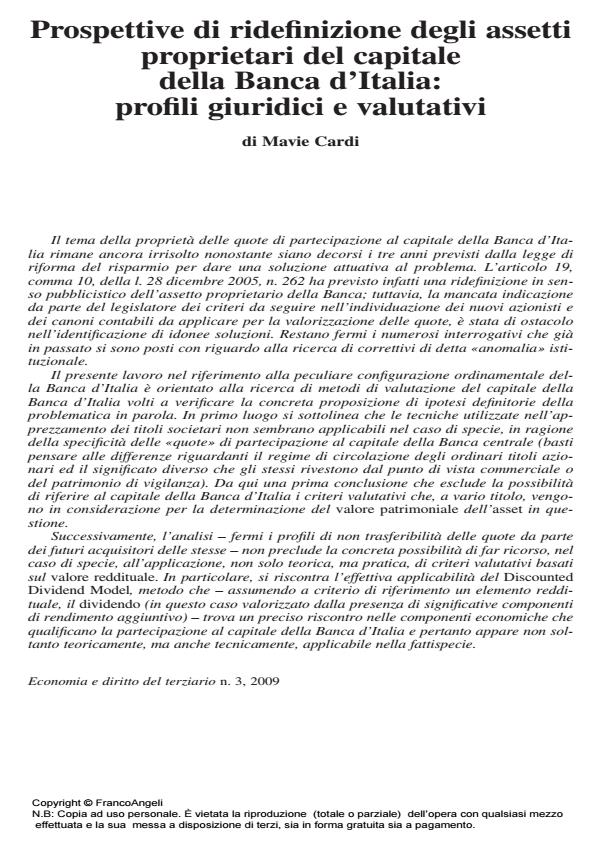Prospettive di ridefinizione degli assetti proprietari del capitale della Banca d’Italia: profili giuridici e valutativi
Journal title ECONOMIA E DIRITTO DEL TERZIARIO
Author/s Mavie Cardi
Publishing Year 2010 Issue 2009/3 Language Italian
Pages 20 P. 445-464 File size 923 KB
DOI 10.3280/ED2009-003003
DOI is like a bar code for intellectual property: to have more infomation
click here
Below, you can see the article first page
If you want to buy this article in PDF format, you can do it, following the instructions to buy download credits

FrancoAngeli is member of Publishers International Linking Association, Inc (PILA), a not-for-profit association which run the CrossRef service enabling links to and from online scholarly content.
The issue of the shareholding structure of the Bank of Italy remains unresolved three years after finding a new regulatory approach in virtue of l. 28 December 2005, n. 262. Article 19, paragraph 10 of the Act provides, in fact, a redefinition, in a public sense, of ownership of the Bank, within three years from the date of entry into force of the law. However, the legislative failure in indicating the criteria to be followed in the identification of new shareholders and accounting fees to apply, has been an obstacle in the identification of appropriate solutions. The necessary consideration of the profiles resulting from the legal structure and the particular configuration of the Bank does not preclude, however, the possibility of finding a method to assess the Bank’s capital and to ensure its practical applicability to this particular case. The difficulty of the matter lies in the specific configuration of the Central Bank’s assessment which - even considering economic aspects - can not be solved through the techniques usually used in appreciation of ordinary company shares because of the particular legal context of such shares (especially in terms of commercial or regulatory capital). The analysis developed during the study led to exclude the possibility of applying evaluation criteria that variously refer to the consideration of the asset value. Differently, the legal framework and the non-transferability of quotas by their future buyers, leads to affirm the practical applicability of income valuation methods. In particular, on the basis of all of the considerations developed in the work, it seems possible to find the actual applicability of the Discounted Dividend Model that, taking as an object specific income - the dividend (in this case enhanced by its significant components additional return) - is reflected in specific economic components that qualify the shareholding value and therefore seems not only theoretically, but also technically, applicable to the case.
Mavie Cardi, Prospettive di ridefinizione degli assetti proprietari del capitale della Banca d’Italia: profili giuridici e valutativi in "ECONOMIA E DIRITTO DEL TERZIARIO " 3/2009, pp 445-464, DOI: 10.3280/ED2009-003003